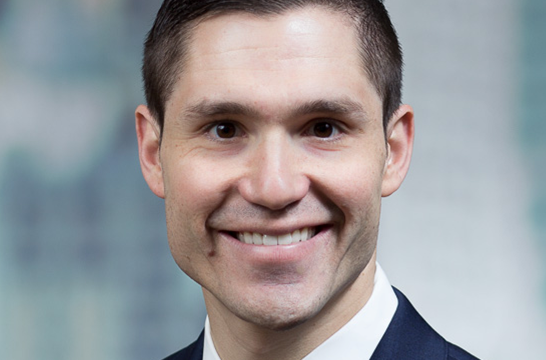The flexibility to shift weightings between equities, bonds and other securities should allow a fund with a multi-asset strategy to cushion falls in some markets while benefiting from rises in others. However, at times of extreme stress as witnessed since March, markets that typically move in opposite directions often take the same route. In investment jargon, correlations trend to one.
Nevertheless, “multi-asset income strategies remain important as the search for quality income and yield is now harder than ever. Access to multiple and diversified income sources across geography, asset class and capital structure is critical for identifying income opportunities efficiently,” Eric Bernbaum, portfolio manager at JP Morgan Asset Management told FSA.
US-based Bernbaum manages the firm’s $26.12bn Global Income Fund, which is available to Singapore retail investors.
The fund started the year “positioned conservatively,” according to Bernbaum.
It had 33% in equities, a historically small high yield bond allocation and exposure to securitised credit (mostly residential mortgage-backed issues) for diversification and to tap into the strength of the US consumer.
“But, we experienced liquidity issues in credit and securitisation during the March volatility, so that made the fund [in practice] less defensive than we had hoped,” he said.
The fund has suffered a 6.05% three-year cumulative decline, compared with a positive 1.15% average return by 50 other funds designated balanced mixed asset products available to Singapore retail investors by FE Fundinfo. Its performance has also fluctuated more than the sector average, with annualised volatility of 13.32% compared with 10.52% over the past three years.
The damage was done in three weeks in March, when the fund’s NAV plunged 20%, before rebounding 13.65% from its trough by 11 May, according to FE Fundinfo data.
The yield on the fund rose to 5% at the end of March from 4.5% a month earlier, and is now even slightly higher today, said Bernbaum.
Certainly, the fallen in asset prices accounts for the rising yield, but it might be an attractive entry point for new buyers of the fund.
As the crisis has developed, and investors have oscillated between panic and euphoria, Bernbaum has re-jigged his portfolio to reduce risk.
He trimmed equity exposures globally to 29%, maintaining a preference for higher quality US equities.
Although markets are looking past the first two quarters of this year, which will be horrific for corporate earnings, and are trying to express a position based on the second half of 2020 and into 2021, Bernbaum is unconvinced.
“Valuations are subject to earnings and not only are forward-looking earnings uncertain, but corporate management teams continue to withdraw guidance altogether. So, it’s hard to get a handle on how attractively valued equities are currently,” said Bernbaum.
Dividend cuts are a constant concern, but “most of the companies that we hold which have made cuts are expected to resume payouts in due course given their strong balance sheets and payouts,” he said.
Meanwhile, he added duration through US Treasury futures, in an effort to help curb the downside of stress in other credit and risk assets. At the end of March, the duration of the fund’s bond exposure was about 3.5 years, up from 2.25 years at the start of the year.
Like other mixed-asset income fund managers, Bernbaum also increased cash levels to almost 10% in order to preserve capital as traditional negative correlations of government bonds to risk assets broke down, and to meet fund redemptions.
Buying opportunities
“It also ensured that we had ‘dry powder’ for potential buying opportunities,” he said.
Most of those opportunities seem to have been among investment grade US and European corporate bonds: the fund’s allocation to the sector has risen to 7% from zero in January.
“Investment grade corporate bond spreads are attractively wide, and we felt that companies [especially BBB and single-A names] have strong balance sheets and are not experiencing the concerns facing some high yield sectors,” Bernbaum explained.
Moreover, the inclusion of investment grade corporate bonds in the Federal Reserve’s buying programmes has been a “game changer”, he added.
The fund’s high yield bond exposure is about 33%, of which three-quarters is in the US and one-quarter Europe.
“Although there is potential for positive total returns from the sector through spread compression and attractive yields, we think that allocation size is appropriate [in this environment],” he said.
From a sector perspective, the fund is overweight defensive areas such as telecoms and healthcare, and underweight energy — due to the collapse in the oil price — as well as metals and mining. It also continues to reduce exposure to credits directly impacted by Covid-19, even as some have rallied from their March lows, such as travel and lodging.
In addition, Bernbaum pointed out that European high yield is generally better credit quality than US high yield, so the fund has diversified by increasing its exposure to the region.
“Our high yield portfolio managers are expecting a default rate of 7% to 10% in the US and only 5% to 8% in Europe. Based on current positioning and historical experience, we’d expect to experience roughly half of the index default rate in the US and somewhere between 25% to 50% of the default rate in Europe,’ he said.
“The spreads we’re currently getting for those default rates more than justify staying invested,” he added.
Meanwhile, Bernbaum is happy to maintain his historically low allocation to other risk assets, especially equities.
“If we were to gain more confirmation of a successful restart of the global economy, we would feel more confident adding back risk in equities where we see attractive valuations,’ he said.
JPM Global Income Fund vs balanced mixed asset sector average


















